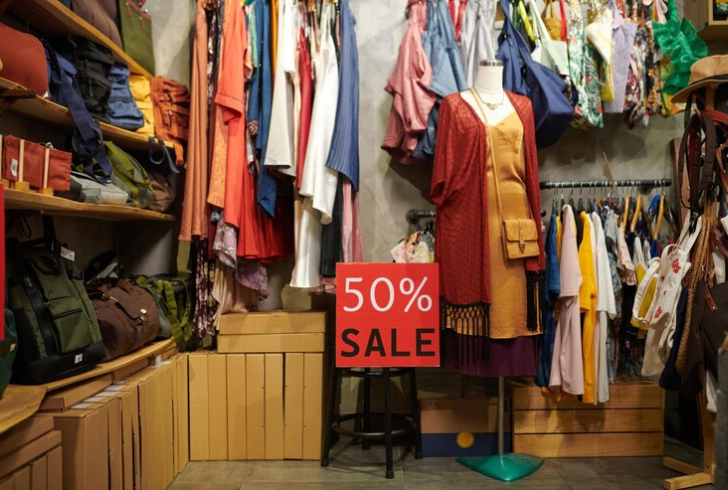Garage sales are more than just clearing out clutter; they’re opportunities to turn unwanted items into cash while creating a fun shopping experience for your community. Knowing how to price things for a garage sale is key to attracting buyers and maximizing your sales. Here’s how to master the art of garage sale pricing, ensuring your event is a resounding success.
Understanding Your Pricing Strategy

Freepik | dragonimages | Competitively pricing everyday items like clothing and books based on market comparisons can boost sales.
Before you stick price tags on everything, consider your goals. Are you aiming to make a profit, or simply clear out space? Your strategy will dictate how you price your items. For new or valuable items, referencing their original retail price and then offering a discount can attract buyers.
However, for everyday items like clothing and books, pricing competitively based on what similar items are selling for online or in local thrift shops is often more effective.
Simplify Pricing for Efficiency
Keep your pricing straightforward and transparent. Use rounded numbers like $1, $5, $10, which are easy for buyers to add up mentally. Remember, many garage sale shoppers enjoy haggling, so consider pricing slightly higher than your desired amount to accommodate negotiations.
Essential Tips on How to Price Things for a Garage Sale
When pricing individual items, consider these practical tips:
- Labeling – Use masking tape or stickers to mark prices clearly. If multiple families are participating, label items with initials to track sales accurately.
- Color Coding – Designate different colored stickers for various price ranges, such as red for $1 items and yellow for $5 items. This helps buyers quickly assess pricing.
- Bulk Deals – Encourage larger purchases by offering discounts on bundles of items. For example, “5 for $4” on smaller items can incentivize buyers to purchase more.
- Value-Based Pricing – Price items between 10% to 30% of their retail value to attract bargain hunters while ensuring you earn a reasonable return.
Setting Initial Prices for Common Items

Freepik | Group similar toys together and competitively price them, with each item priced up to $3.
Here’s a practical guide for pricing common garage sale items:
- Books – Paperback books typically sell for around 25¢, while hardcovers can go for $1 each. Organize them neatly to attract book lovers.
- Clothing – Baby clothes generally range from 50¢ to $3, while adult clothing can be priced between $1 to $3 per item.
- Toys and Games – Group similar toys together and price them competitively, with prices ranging up to $3 per item.
- Electronics and Appliances – Price these items at approximately one-third of their retail value, adjusting slightly for items still in their original packaging.
- Household Items – Kitchenware like pots and pans can range from $1 to $4 each, depending on their condition and utility.
Adjusting Prices Throughout the Sale
To keep momentum and attract more buyers as the day progresses, consider reducing prices gradually. Offering discounts on items that haven’t sold can help clear out remaining inventory and reduce what you’ll need to pack up later.
Creating a Positive Shopping Experience

Freepik | Set fair prices and create a welcoming shopping experience to attract and retain customers.
Beyond pricing, creating a pleasant atmosphere can significantly impact your sales:
- Ambiance – Play background music to create a relaxed shopping environment. Offer refreshments like free lemonade to keep shoppers comfortable and engaged.
- Display – Arrange items neatly and logically to make browsing easy. Use tables and racks to showcase clothing and smaller items effectively.
- Legal Considerations – Check local regulations to ensure your garage sale complies with any permit or zoning requirements. This ensures a hassle-free event.
Mastering the art of garage sale pricing is essential to maximizing your sales potential and creating a positive experience for buyers. By understanding how to price things for a garage sale, simplifying your pricing strategy, and creating an inviting atmosphere, you can increase your chances of success. Remember, flexibility and a customer-centric approach are key to turning your clutter into cash. Happy selling!










